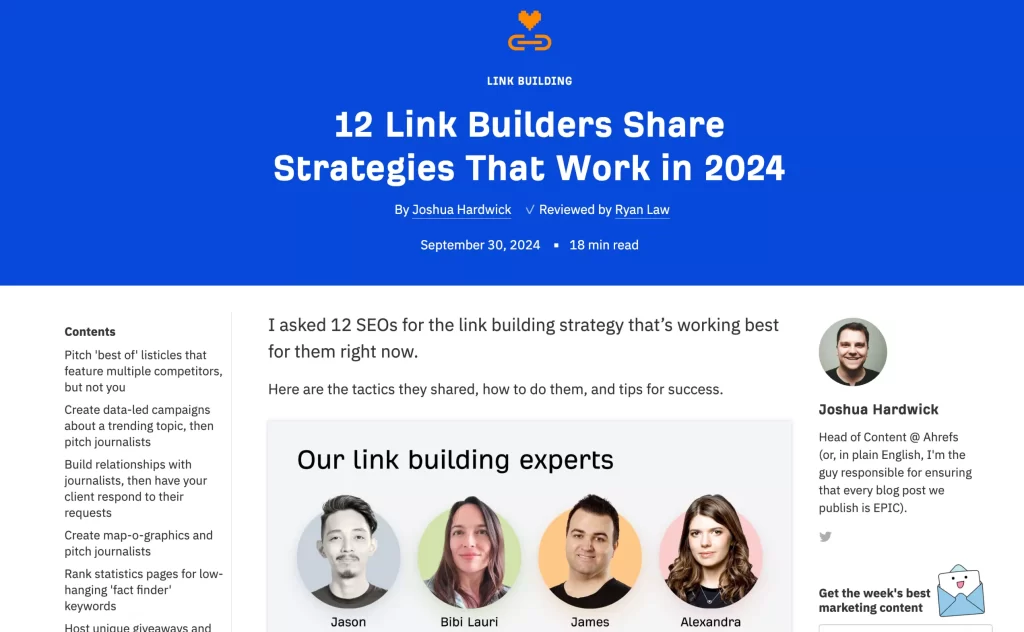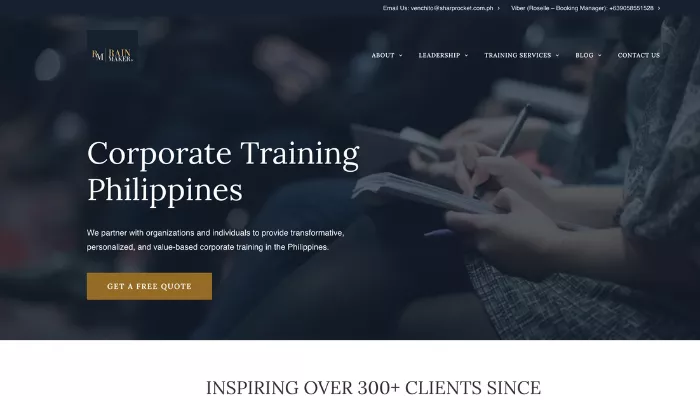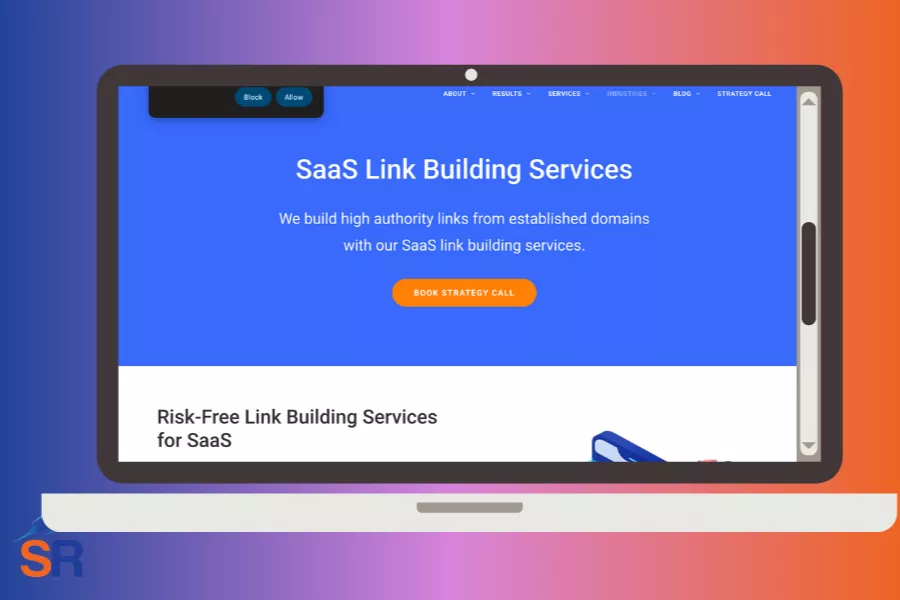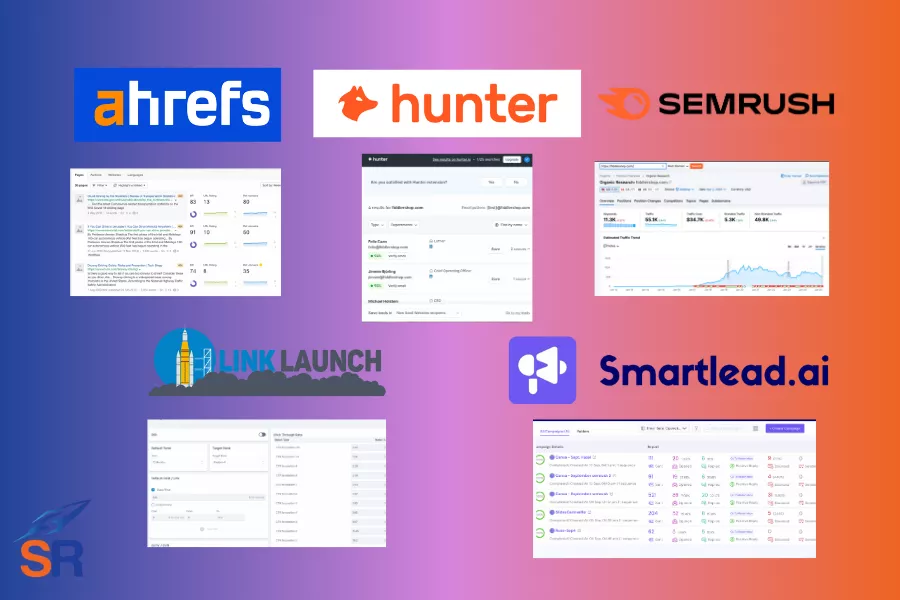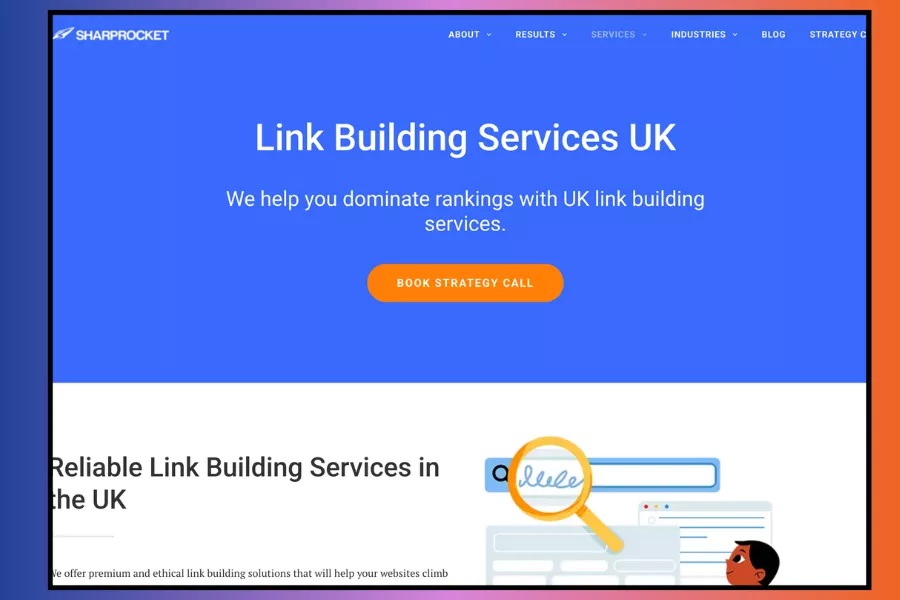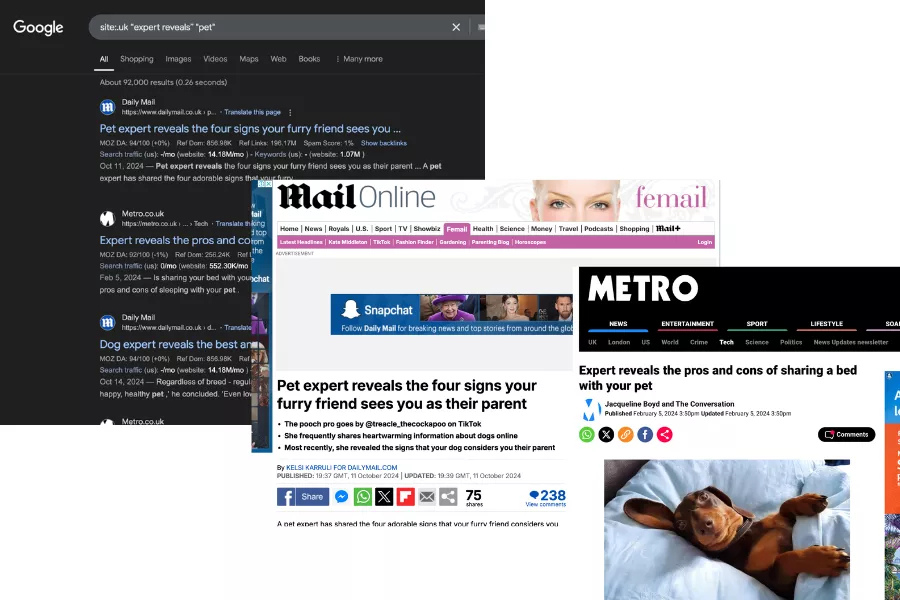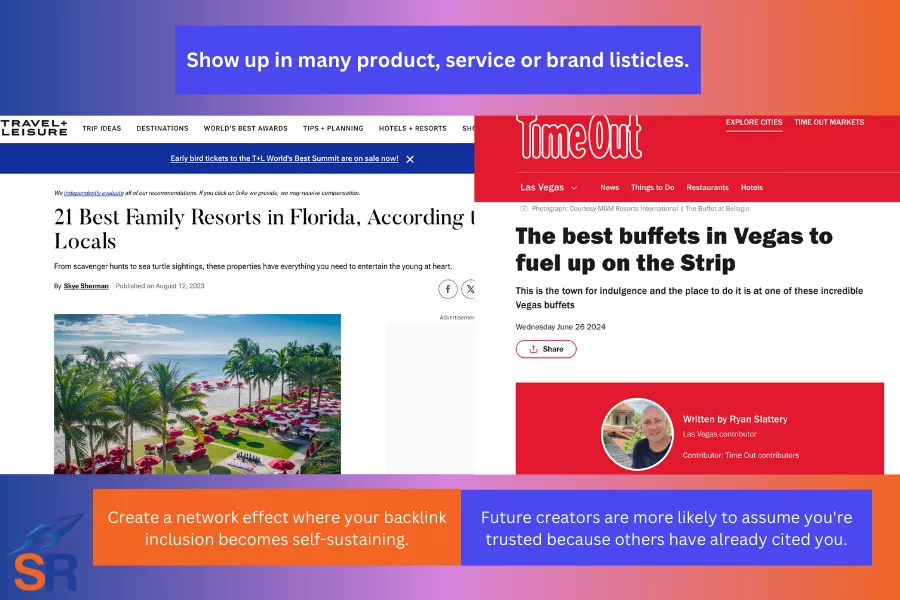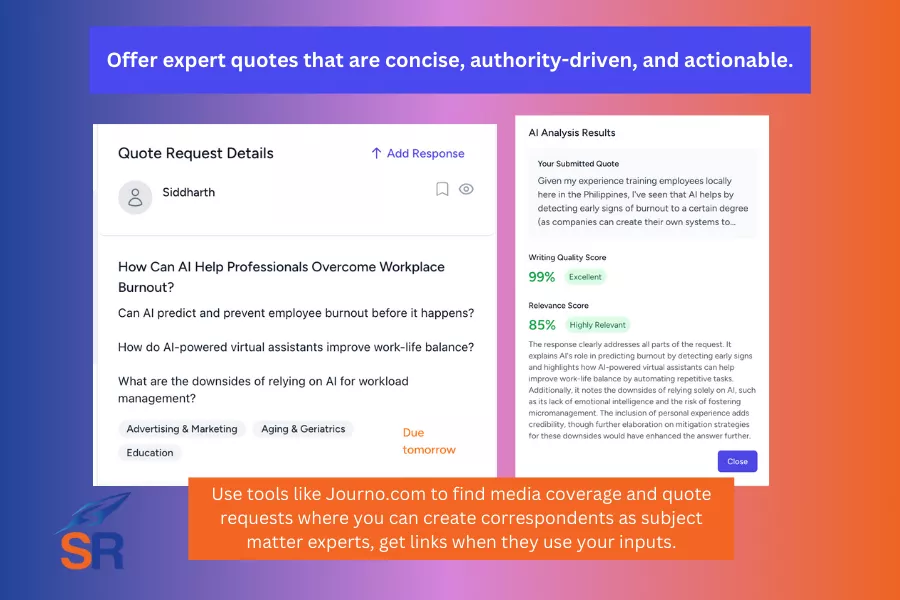Create content that ranks and converts.
SEO-driven content marketing aims to rank pages and engage users so that they will convert.
While most SEOs vouch for just rankings, I do believe that content marketing activities should impact the business goals and objectives ─ and any marketing activity, for that matter.
In this guide, we’ll explore tips on utilizing content marketing for startups to drive SEO impact to your website.
Contents
Toggle1. Turn Audience Research to Content Clusters
Start by understanding the needs, interests, and challenges. This can involve creating a buyer persona that speaks to the demographic and psychographics of your target audience. Getting fresh data from your management team can also help pinpoint who your customers really are.
Create your ICP (Ideal Customer Profile), which describes your business’ ideal customer based on common attributes like demographics, behavior patterns, needs, and pain points.
Then, use tools like Sparktoro or Ahrefs to discover topics and questions your ideal customers might be searching for to find solutions.
When looking for topics, ensure you tap into each stage of the marketing funnel (Awareness, Interest, Desire, and Action), or in the digital marketing realm, we have BOFU (bottom of the funnel), MOFU (middle of the funnel), and TOFU (top of the funnel).
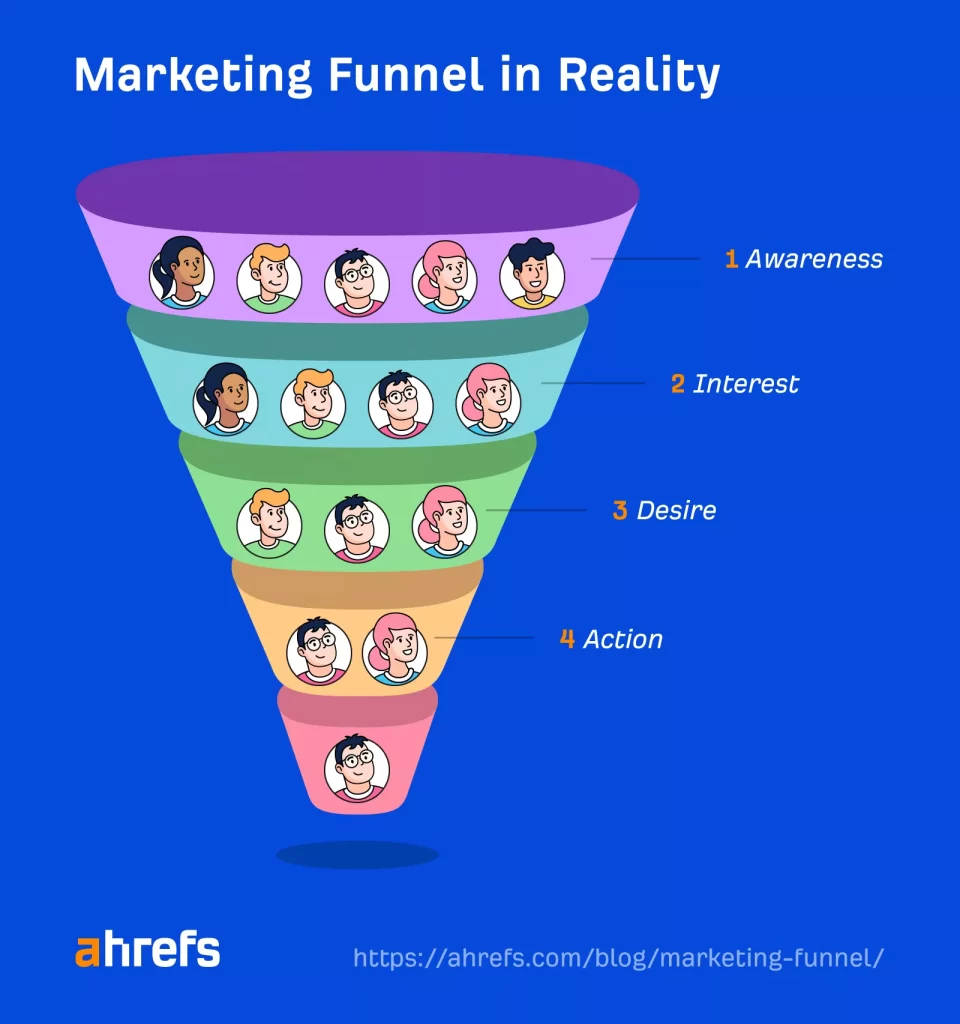
Even if it’s not a product/service page you’re publishing, you can still convert customers on your pages in the TOFU funnel (informational pages) as long as you deliver solutions to their needs and contextually place a solid call to action on your landing pages.
Here are a few steps to building effective topic clusters:
- Identify Core Topics: Identify 3-5 broad topics that align with your startup’s services, products, or expertise. These will become your pillar pages.
- Conduct Keyword Research: Use tools like Ahrefs, SEMrush, or Google’s Keyword Planner to find relevant keywords related to your core topics with significant search volume. Pro Tip: Do not skip zero-volume keywords that must be part of your content marketing base.
- Create Subtopics: Based on the keyword research, identify subtopics that address various facets of the core topic.
- Link Your Content: Interlink your pillar page with cluster pages. Internal linking helps search engines better understand your priority pages and improves the crawling and indexation of your new pages.
For instance, If your startup offers project management software, your pillar topic could be “Project Management Techniques”. Cluster pages could cover subtopics like “Agile Methodology”, “Kanban vs. Scrum”, and “Project Management Tools for Startups”.
Publishing these product-led linkable assets can also lead to more link building opportunities while driving new users to your product or service.
2. Enlarge Your Publishing Base Through People-First Content
People-first content is about creating valuable, relevant, and high-utility content that meets the needs and expectations of your intended audience.
We’ll examine these four critical components of people-first content (Jason Acidre’s framework).
Needs Met
“Needs Met” is about how well your content matches the searcher’s intent and fulfills their expectations. Here’s how to ensure that your content meets this criterion:
- Intent Matching: Ensure your helpful content answers the exact queries your audience is searching for. Use tools like Search Console to identify common keywords and adjust your content to fulfill informational or commercial intent. Avoid misleading click-bait titles that don’t deliver on their promises.
- Target a Single Topic & Intent: Focus on a single topic, providing clear and concise answers without overwhelming the reader. Avoid burying essential information in long, multi-topic content. Consider using separate pages for subtopics with significant search volume.
- Direct Answers to Main Queries: Present direct answers prominently above the fold using formats like Quick Answer Boxes, Key Takeaways, or Summaries. This approach caters to users seeking quick information, especially on mobile devices.
- Remove Fluff Content: Keep your writing concise and relevant, eliminating off-topic, redundant, or overly wordy sections to maintain clarity and improve user experience.
For instance, in every blog post I write for our corporate training blog at Rainmakers, I determine the user intent of each search query. Asking the question, “What do they want to know first?” helped me prioritize points (and put them above the fold) so it would immediately satisfy the user’s needs.
Here’s a recent post on “What is leadership to you?” The searchers would likely be students and learning and development practitioners who are looking for different schools of thought on the subject.
I delivered what they needed, based on my expertise on the subject:
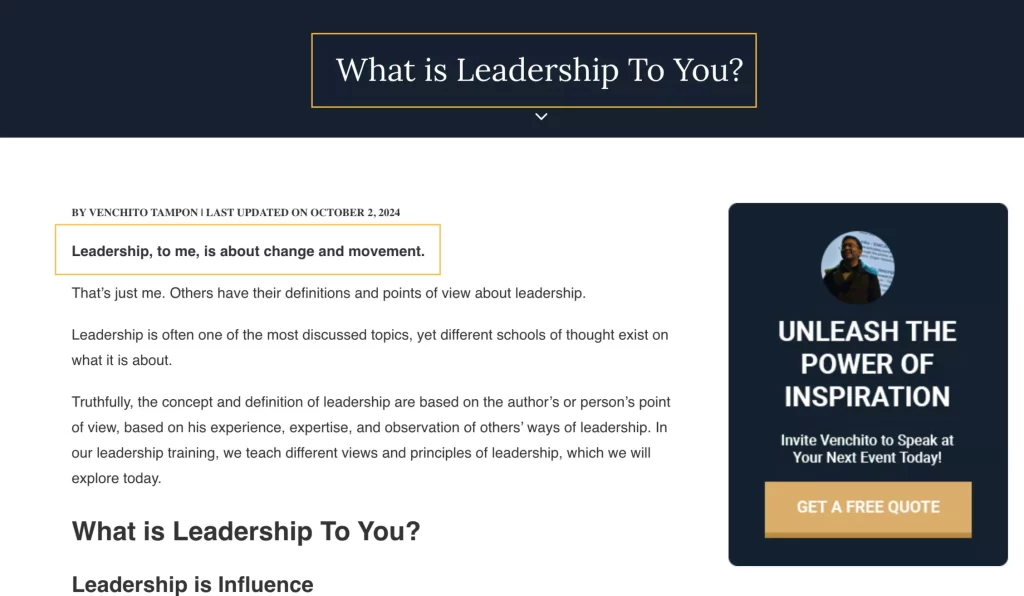
Another example is my coffee shop blog. We meet users’ needs by providing direct answers to certain questions (e.g., how much does it cost to start a coffee shop?).
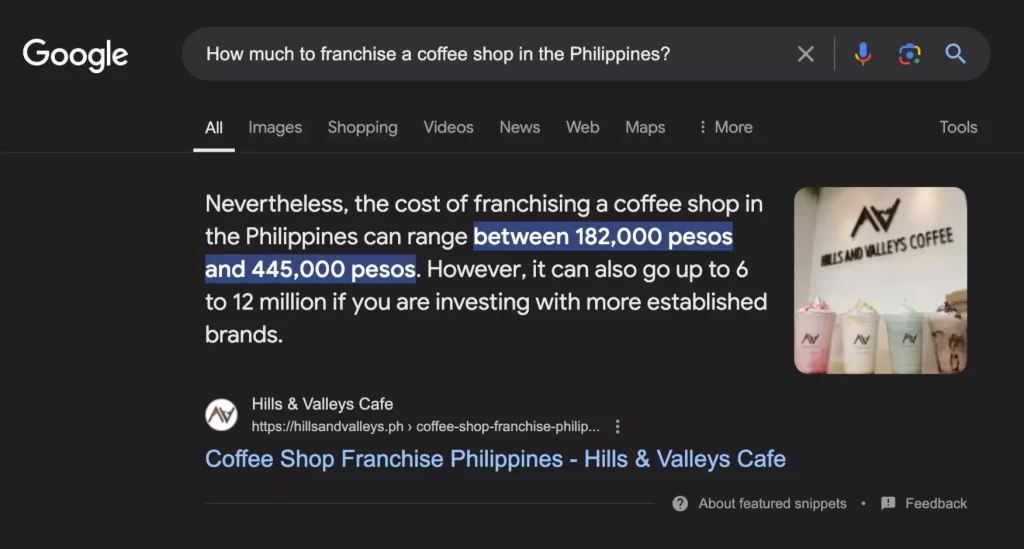
Now, this brings us to the next component of creating people-first content:
EEAT (Expertise, Experience, Authoritativeness, Trustworthiness)
By now, we should have known this populating all over SEO blogs. The ability to integrate EEAT into your content matters ─ here are few tips to leverage this:
- Comprehensive Author Details: Showcase the author’s experience, expertise, education, achievements, and social media links to showcase their credibility (authorship SEO). A detailed bio builds trust and authority.
- Proper Sourcing & Citations: Cite reputable sources to demonstrate that your content is research-based and factual, enhancing trustworthiness and depth.
- Including Credible Stats or Expert Quotes: Incorporating statistics or expert quotes can boost content visibility and authority by 30-40%, providing evidence-based information that supports your claims.
- Accuracy of Information: Ensure your content is accurate, especially for industries like YMYL (Your Money, Your Life). Update facts and data regularly to maintain integrity and ethical standards.
- Editorial Process, Disclaimer, and/or Disclosure Statements: Include disclaimers, disclosures, or editorial policies to add transparency, authenticity, and clarity about the content’s intentions or potential biases.
Ahrefs has solidified its brand marketing by incorporating credible authors and experts to contribute insights and quotes to its blog posts, boosting the pages’ credibility and search performance.
Originality & Information Gain
Google emphasizes originality and information gain to combat the issue of copycat content. The goal is to provide unique insights that add value beyond existing content. Here’s how to enhance originality:
- First-Hand Knowledge: Share personal experiences, unique insights, or innovative ideas that address unmet needs. This will set your content apart and position your brand as an expert, potentially earning hard-to-replicate DR 90 backlinks.
- Original Research & Data: Conduct your research or gather data through surveys, experiments, or analysis. If you can’t collect data, source it from public databases and present it from a unique angle to offer fresh insights.
- Provide Self-Sourced Images: Use original visuals like screenshots, branded infographics, product photos, or personal experience images to add authenticity and relatability. This makes your content more trustworthy and distinctive.
When incorporating experiences into your content, include what made you feel, see, touch, and taste ─ these are five senses only a person with actual experience on the topic can share in the content.
Give Depth To Your Content Assets
One of the WOSCON 2024 speakers, Kasra Dash, mentioned during the panel Q&A that building topical authority on a website requires publishing more pages within a relevant subject and achieving depth through topics that haven’t been published elsewhere.
Identify subtopics that could be expounded into single blog posts. Based on your expertise and experience, think of topics you can add more depth by giving more information on the “how-to” or new insights from real-world practice.
You can also publish internal data studies that align with topics to validate and support points. This is also an additional content asset that attracts new links to your page.
3. Build a Link-Earning Flywheel
Link building through manual outreach is becoming more difficult these days. Asking for inclusion or requesting a link requires newly contributed content and a solid reason for linking.
This is one primary reason why building a link-earning flywheel on your site gives you leverage to earn passive links without the constant need to do email outreach.
Here are a couple of ways to build a link-earning flywheel:
- Invest in ranking content assets for informational queries other publishers are searching for when looking for additional resources to reference in their content work (e.g., how-to, statistics, data, etc.).
- Provide direct answers to posts’ FAQs and industry questions to get featured snippets.
- Create high-utility content like tools, calculators, or quizzes that intently help solve your target customers’ problems.
- Engage in thought leadership. Participate in webinars, podcasts, or industry forums to establish authority in your space and attract publications that will link to your insights or expertise.
4. Brand Positioning via Content Promotion
Contributing content to other sites in your industry positions your brand from a place of authority, as you provide new insights that can add to the body of knowledge in your industry.
Here are ways to position your brand through content promotion:
- Promote your content assets by linking to them from content you distribute on other blogs (i.e. guest posts).
- Create media lists for your digital PR campaign and build relationships with journalists and publishers. If you receive requests and notifications for expert quotes, have your client respond to them (as they’re likely to get a positive response).
- Use Ahrefs to find pages with many links (>100). Create something better and pitch as a replacement.
This link-earning flywheel generates momentum over time, as quality content attracts new backlinks, and these linking pages also attract links on their own.
5. Maximize Rankings for Low-Hanging Fruits
Low-hanging fruit are keywords that are easier to rank for and can quickly increase traffic to your site. Optimizing content for these keywords can help your startup gain quick wins and establish your brand authority to tackle more competitive search terms.
Here’s how to identify and leverage low-hanging keywords:
- Use tools like Ahrefs, SEMRush, and Google Search Console to find keywords you’re already ranking for but aren’t in the top positions (e.g. position 5 to 20). These are opportunities where a little optimization efforts can significantly improve rankings.
- Target low-competitive long-tail keywords. For instance, you can write more specific topics like “best solo travel destinations in Southeast Asia” or “affordable family vacation spots in Europe” instead of targeting “travel destinations.”
- Optimize and upgrade existing content to include low-hanging keywords (discovered through Search Console or Ahrefs). Update headings, meta descriptions, image alt text, and internal links to reflect the targeted terms.
This strategy works because it allows your startup to achieve quicker SEO results. As you gain more authority and organic visibility, it helps you dominate other terms, mainly commercial queries, which brings additional revenue.
Written By
Venchito Tampon
CEO and Co-Founder at SharpRocket, a link building agency. With a decade of experience, Venchito has a proven track record of leading hundreds of successful SEO (link builidng) campaigns across competitive industries like finance, B2B, legal, and SaaS. His expert advice as a link building expert has been featured in renowned publications such as Semrush, Ahrefs, Huffington Post and Forbes. He is also an international SEO spoken and has delivered talks in SEO Zraz, Asia Pacific Affiliate Summit in Singapore, and Search Marketing Summit in Sydney, Australia. Check out his other business - Hills & Valleys Cafe.
Reviewed By

Sef Gojo Cruz
COO at SharpRocket, overseeing end-to-end operations, from crafting link building strategies to leading high-performing teams. Previously led SEO initiatives at Workhouse, a digital agency in Australia, and Keymedia, a real estate media company based in New Zealand.
How our LINK BUILDING AGENCY in UK builds 250 links/mo consistently using Predictable Link Building Methodology™…
- Using a SIMPLE and PROVEN system
- Using a SCALABLE strategy
- No private blog networks
- No creepy outreach emails
